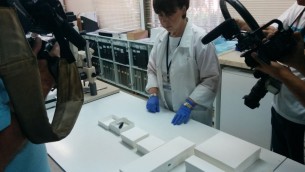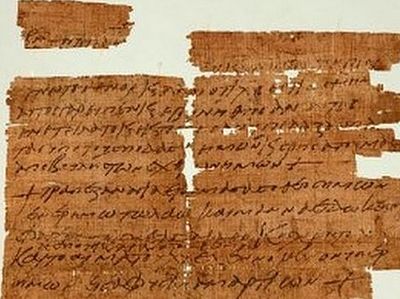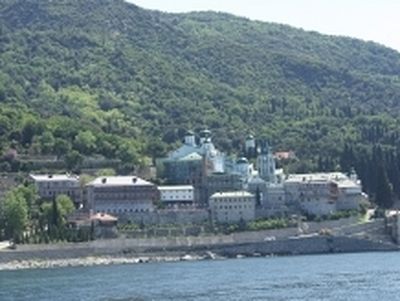July 20, 2015
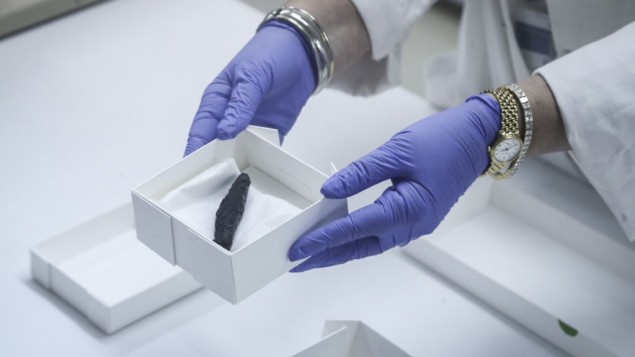 A scrap of a torched Torah scroll being shown by staff in a lab of the Israel Antiquities Authority on July 20, 2015.
A scrap of a torched Torah scroll being shown by staff in a lab of the Israel Antiquities Authority on July 20, 2015.
Thanks to a high-tech solution, a charred parchment scroll discovered by the shores of the Dead Sea bearing verses from the Book of Leviticus was deciphered for the first time, archaeologists announced Monday.
The document, found during the excavation of the synagogue in Ein Gedi 45 years ago, was burned 1,500 years ago while stored inside the ark in the ancient house of worship. Since then, however, the text has been unreadable.
Using micro-CT scanners, specialists at the Israel Antiquities Authority’s Dead Sea Scrolls laboratory in Jerusalem discerned the text written on the charred scroll: verses from the second chapter of the Book of Leviticus. The results of the CT scans were sent to computer scientist Brent Seales of the University of Kentucky, who created a 3D reconstruction of the scroll.
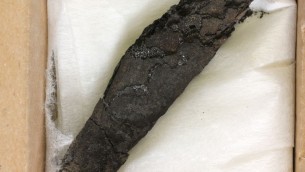
Mentioned in the Bible as an oasis where David took refuge from King Saul, Ein Gedi was home to a Jewish community in antiquity and, during Roman times, was noted for the balsam plantations growing nearby. Excavations in the 20th century unearthed the remains of the town and a synagogue with a large mosaic floor.
The ancient Jewish village was completely burned in antiquity, Yosef Porat, one of the archaeologists who excavated the site, said in a statement, “and none of its residents returned to resettle it, or to pick through its ruins in order to rescue valuables.”
